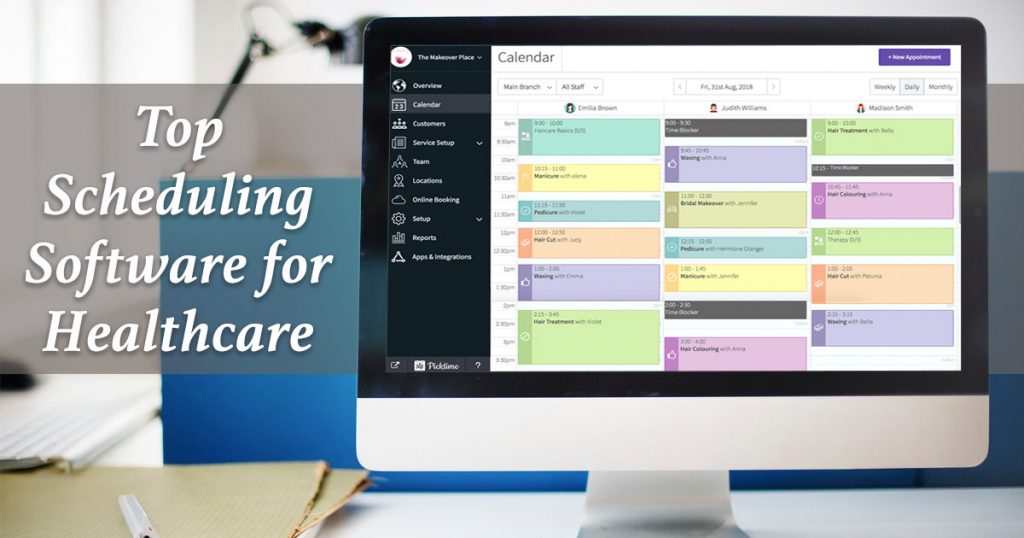Scheduling software has completely changed the way businesses manage their work. These tools make handling appointments easier by organizing schedules, reducing mistakes, and saving hours of staff time. A report shows that the global market for scheduling software was worth $316.85 million in 2019 and is expected to grow to $546.31 million by 2026. This shows that more and more businesses are seeing how useful these tools are for improving their daily operations. From cutting down no-shows to making customer interactions smoother, scheduling software has become an important tool.
This is even more important in healthcare, where managing appointments isn’t just about convenience—it’s about saving lives. Hospitals and clinics are busy places where every minute counts, and delays can impact a patient’s health. Scheduling software helps organize patient appointments, handle urgent cases first, and lighten the load of paperwork for staff.
Choosing the Right Scheduling Method for Your Practice
Finding the right scheduling software for your healthcare practice starts with understanding your specific needs and how your facility runs. Every medical practice is different, with varying numbers of patients, types of care, and specialties. The first step is figuring out which scheduling method fits best with your daily operations.
Learning about the different types of scheduling can help you decide what will work well for your practice. For example, some methods are great for busy clinics that see many patients, while others are better for smaller, specialized practices or emergency care. Trying out different methods before choosing a software solution is important. It allows you to see what works best for both your staff and patients.
6 Types of Appointment Scheduling in Healthcare
Finding the right way to schedule appointments for your healthcare practice starts with understanding the different methods available. Each type of scheduling is designed to meet specific needs and work best for certain practices.
1. Wave Scheduling
Wave scheduling groups four to six patients into the same time slot, such as every 30 minutes. Patients are then seen based on the order in which they arrive. This method works best for busy outpatient clinics and walk-in centers that must manage a steady flow of patients.
Software like Cerner Scheduling Management and QGenda can help organize this system. To keep patients happy, it’s important to inform them about potential wait times and have enough staff on hand to manage emergencies or unexpected walk-ins efficiently.
2. Time-Slot (Stream) Scheduling
This scheduling method gives every patient a specific, pre-assigned appointment time, ensuring the waiting area doesn’t get overcrowded. It’s ideal for smaller clinics or private practices with a predictable number of patients.
Tools such as AthenaHealth and WebPT Scheduling are useful for supporting this approach by automating reminders and rebooking missed appointments. To maximize efficiency, clinic staff should closely monitor any cancellations and fill empty slots quickly to reduce wasted time.
3. Combination of Wave and Walk-Ins
This method splits each hour into two parts. The first half is for pre-scheduled appointments, while the second half is reserved for walk-ins. It provides flexibility for clinics that cater to both scheduled and unscheduled patients, such as family health centers or rural clinics.
Software like eClinicalWorks and AdvancedMD can make managing this system easier. To improve accuracy, staff can prioritize scheduled patients while using tools like self-check-in kiosks to streamline walk-in processes.
4. Open Booking Scheduling
With open booking, patients can come in during a specific window of time, like between 9 AM and 11 AM, and are seen on a first-come, first-served basis. This is ideal for facilities like immunization clinics or those with part-time specialists.
Software options like SimplePractice and Zocdoc can help organize these open time frames. Clinics should use past data to better plan appointment windows and encourage patients to arrive early to avoid longer wait times.
5. Cluster Scheduling
Cluster scheduling groups patients with similar medical needs, such as diabetes care or prenatal check-ups, into consecutive slots. This method works well for specialized clinics or routine care practices.
PracticeFusion and HealthPlix make managing cluster schedules easier. To run this system effectively, staff should plan for recurring activities in advance and stick to predictable timelines to keep everything running smoothly.
6. Double Scheduling
Double scheduling involves booking more than one patient for the same time slot. This method is often used when clinics deal with urgent cases or short consultations, with additional medical staff available to assist.
Nexhealth and Kareo are great tools for handling double scheduling efficiently. To keep operations running smoothly, clinics should ensure they have enough backup personnel and use diagnostic equipment wisely to minimize overlaps and delays.
Create a Smoother Healthcare Experience
Picking the right way to schedule medical appointments is crucial for keeping things running smoothly in a healthcare facility. A good system not only cuts down on patient wait times and ensures they get care on time but also makes the job easier for staff. When everything is well organized, it creates happier patients, less stressed staff, and better care overall.
It’s a great time to look at how your current scheduling works. Your facility can operate more efficiently by knowing what your practice requires, investigating various scheduling strategies, and utilizing the appropriate software. Start today—evaluate your system and take steps toward making healthcare better for your team and your patients.
